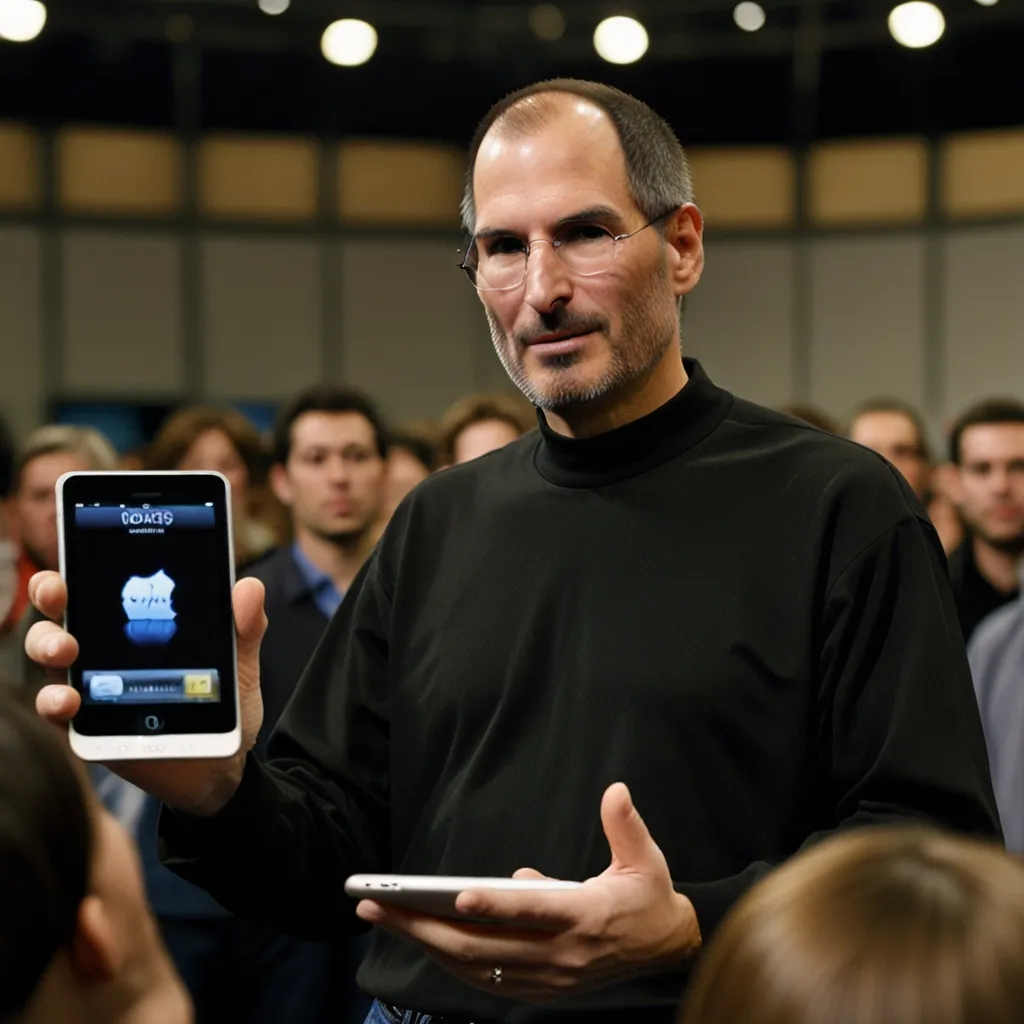The first iPhone was released in 2007. This groundbreaking device was announced by Steve Jobs, Apple’s CEO, at the Macworld convention on January 9, 2007. It was a revolutionary mobile phone, a widescreen iPod with touch controls, and a breakthrough Internet communications device all in one. The iPhone introduced an entirely new user interface based on a large multi-touch display and pioneering new software, letting users control the device with just their fingers.
The original iPhone featured a 3.5-inch display, a 2-megapixel camera, and a multi-touch interface. It ran on a custom version of iOS, then called iPhone OS. The device combined an iPod, phone, and internet communicator in a single device. It was priced at $499 for the 4GB model and $599 for the 8GB model.
Before the release of the first iPhone, Apple had been working on a beta version since 2004. This beta version was never released to the public but helped Apple develop the phone’s capabilities. In 2005, Apple collaborated with Motorola to develop the Motorola ROKR E1, the first mobile phone to use iTunes. However, Steve Jobs was unhappy with the ROKR E1’s limitations, such as its restricted storage capacity and inability to download iTunes Music Store purchases wirelessly. This led Apple to decide to develop its own phone.
The first iPhone was released on June 29, 2007. It received substantial media attention and was hailed as a breakthrough handheld computer by the Wall Street Journal. Time magazine even named it the Invention of the Year. The iPhone’s release marked a significant shift in the smartphone industry, introducing a touchscreen interface and a mobile app ecosystem that would change how people interacted with technology.
The iPhone’s impact was not without its challenges. Stories of unexpected billing issues began to circulate shortly after its release. One notable incident involved a 300-page iPhone bill received by a user, which became a viral meme and brought attention to the voluminous bills. In response, AT&T sent iPhone users a text message outlining changes in its billing practices.
In September 2007, Apple discontinued the 4GB model and cut the price of the 8GB model from $599 to $399. This move caused an outcry among early adopters who felt they had been unfairly priced. Steve Jobs responded by offering a $100 credit to those who had purchased the iPhone at the higher price.
The second generation iPhone, the iPhone 3G, was released in July 2008. It introduced 3G data and GPS, and most notably, the App Store. The App Store allowed users to download third-party applications, which significantly expanded the iPhone’s capabilities. The iPhone 3G was available in 8GB and 16GB models, priced at $199 and $299, respectively.
The iPhone 3G addressed the two main drawbacks of the original iPhone: cost and inability to access the fastest cellular-phone networks. The introduction of the App Store gave birth to a thriving ecosystem of third-party applications, which has grown to include over 2 million apps as of early 2018.
In June 2010, the iPhone 4 was released, featuring a high-resolution Retina Display, Apple’s first front-facing camera, multi-tasking functionality, and FaceTime. The iPhone 4 was praised for its fit and finish in both software and hardware, performance, app selection, and overall package. It had the longest lifespan of any iPhone model and introduced a white model less than a year after its original release.
In September 2017, Apple introduced the iPhone X, marking a significant design change with an edge-to-edge OLED display and facial recognition technology. The iPhone X was the first Apple event held at the Steve Jobs Theater in Cupertino, California.
Fast forward to September 2023, the iPhone 15 was launched, bringing the Dynamic Island across its lineup. Apple also added an action button to the phones and replaced the lightning port with a universal USB-C port. The iPhone 15 continues the legacy of innovation and design that the original iPhone started in 2007.
Interestingly, the name “iPhone” was not new even in 2007. In 1998, a company called InfoGear released a device also named iPhone. This early iPhone was a 3-in-1 device that combined an internet communicator, phone, and personal digital assistant. Although it was ahead of its time, it did not gain the same level of success as Apple’s iPhone.
The release of the first iPhone in 2007 marked a pivotal moment in technology history. It transformed the smartphone industry and set a new standard for mobile devices. The iPhone’s impact on society has been profound, changing how we communicate, access information, and use apps. The journey from the original iPhone to the latest models is a testament to Apple’s commitment to innovation and design.






